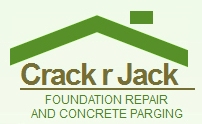If an ICF Wall System is not something of interest, Upper Canada Building Services can install a traditional concrete foundation. For this, proper site preparation is essential.
A house needs a foundation to shoulder its considerable weight; to provide a flat and level base for construction; and to separate wood-based materials from contact with the ground, which would otherwise cause rot and allow termite infestation. Depending on the location and year a house was built, the foundation may be made of stone, brick, preservative-treated lumber, concrete block, or poured concrete.
Concrete is by far the most common foundation material. There are three types of conventional concrete foundations: poured concrete, concrete block, and post-and-pier. Upper Canada Building Services can provide them all, however, building codes regulate the sizes and acceptable types. Everything in the foundation, from mesh to bolts, works together as a single unit to provide a singular, solid base that bears the house's load.
Features: Steel rebar within the concrete makes the concrete structure stronger. Removing concrete or paving material is very difficult work. If a prior foundation removal is required, Upper Canada Building Services has all the proper equipment and training to handle the job.
Slope of your yard: Upper Canada Building Services needs to understand the existing slope of your yard so we can prepare the site for the traditional foundation. We will design and construct your foundation so water drains away from your house keeping the foundation dry. Depeding on the existing slope, we may need to regrade the site or add special drainage systems. For example, a flat grade tends to cause water to sit, and a sloped grade tends to drain water better.
Soil types: Just as in landscaping, it's important to know your soil type when planning your foundation. Drainage the movement of water downward through the soil is typically rapid in sandy soils and slow in clay. A given amount of water can penetrate about three times deeper in sand than in clay, so it's apparent that soil type will affect the drainage system you place around your concrete foundation.
Mostly clay soil is made of very fine, flattened particles that pack very closely together, leaving little space for air and water. This dense soil absorbs water slowly and retains it well. To test for clay, pick up a handful of wet soil and shape it into a ball. Clay will feel slippery. When you let it go, it won't crumble. And when you squeeze it, it will ooze through your fingers in ribbons. Some types of clay soil actually expand in volume when wet. This can cause dramatic shifting that can damage your foundation or basement.
Mostly sandy soil is almost the exact opposite of clay. It's composed of large, rounded particles that don't hold shape when you try to pack it together into a ball. Water enters sand quickly and percolates through it rapidly.
Soil made of loose rock is an exaggerated form of sandy soil. The larger the aggregate of rock, the more water will filter through it.
Mostly solid rock is virtually impervious to water and just about anything else. If your soil is mostly solid rock, please make special note of this when discussing with Upper Canada Building Services.

